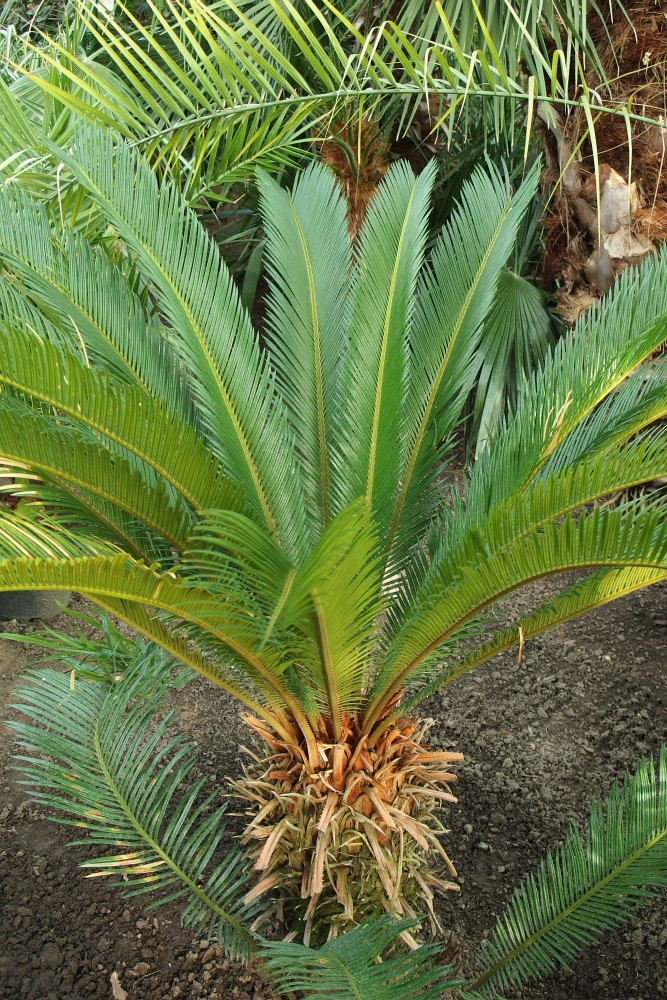Cycas revoluta
English name: King Sago palm
Latin name: Cycas revoluta
Family: Cycadaceae (Cycas genus) - Cycadaceae
Origin: Southern Japan
This regularly-formed plant features a crown of dark green leaves growing from the top of a squat trunk. The king sago grows very slowly, reaching a height of six to seven metres after 50 to 100 years. In young plants, the trunk may be partly underground; it grows slowly, to a diameter of 20 cm. and a height of 7 m. The trunk may branch out, with a leaf rosette at the top. They reach a length of 50 to 150 cm. at their reproductive age. The narrow leaves form in clusters, 8 to 18 cm. long, and have strongly recurved edges. The leaves at the base are transformed into spines. The petiole is 6 to 10 cm. long, and is covered with small spikes. Like all cycads, this species is dioecious, with male specimens producing pollen cones, and the females groups of megasporophylls. The king sago is cultivated as a potted plant.
All parts of the plant are poisonous. Particularly high concentrations of cycasin, a toxic substance, are present in the seeds and young leaves. Other poisons present in these plants are neurotoxic amino acids, including beta-methylamino L-alanine (BMAA). It is common for pets, who like to play among such plants, to be poisoned -- often fatally -- by ingesting sago seeds. More than half the cases of such poisoning in dogs and cats end in their death, despite the treatment they receive.




